With year-round cultivation of different crops, you need to take care of the lighting of winter greenhouses. In autumn and winter, daylight hours are shorter than in summer. Plants need additional light sources. If there is little light, they will slow growth and die. When organizing greenhouse lighting, it is necessary to correctly calculate its quantity and get acquainted with different types of lamps.
Content
- 1 Light and its significance for plants
- 2 Light spectrum and its influence
- 3 The specifics of lighting greenhouses in winter
- 4 Night illumination
- 5 Lighting time
- 6 Varieties of greenhouse lamps
- 7 What illuminate different greenhouses
- 8 How different plants illuminate
- 9 Calculation of the amount of lighting for greenhouses
- 10 Reviews
Light and its significance for plants
With a lack of daylight in winter and autumn, crops begin to wither and hurt. The key to survival and the healthy existence of plants is photosynthesis. Full photosynthesis is impossible without light. When plants produce chlorophyll, they fully absorb the carbon dioxide needed for nutrition. The formation of organic substances in greenhouse crops is impossible without solar and artificial lighting.
Signs of lack of lighting:
- change in the shape of plants (for example, unnatural lengthening of cuttings and stems);
- their slow growth;
- lack of flowering;
- yield drop;
- lower foliage turns yellow.
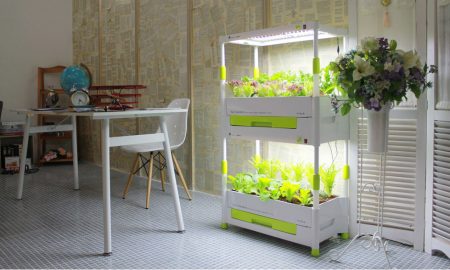 You may be interested in:
You may be interested in:Light spectrum and its influence
Plants respond best to the red and blue rays of the light spectrum. When lighting a greenhouse in winter, care must be taken to ensure that crops are not deprived of natural light. Also, do not use the rays of only one spectrum, if it is not about colors. This is useful for flowers: their color becomes saturated and bright.
Rays of light affect greenhouse crops in different ways. Blue light stimulates photosynthesis, orange and red improve flowering. These flowers should not be many, otherwise the plants die. Ultraviolet radiation promotes the formation of vitamins. Thanks to him, seedlings become resistant to winter cold.
When choosing lamps for a greenhouse, their colors should be different. When installing equipment, it is important to comply with lighting standards, in accordance with the requirements in the region and the characteristics of the cultures.
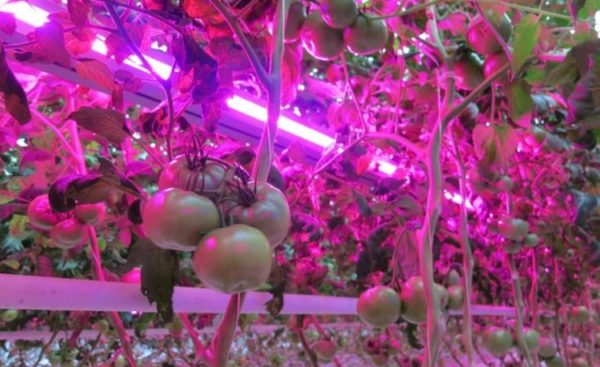
The specifics of lighting greenhouses in winter
If the access of light to cultures is limited and is less than 10 hours per day, their growth may stop. The average duration of daily lighting in a greenhouse in winter should be from 12 to 16 hours. Depending on the time of day, two methods are used for backlighting:
- fixtures (during the day, as an additional highlight);
- photoperiodic lighting (at night).
Night illumination
Round-the-clock use of lighting devices will not benefit plant crops. They need about 6 hours of total darkness to rest. There are vegetables, berries and plants that need individual lighting conditions.
Cucumbers cannot stand pauses between different types of light.When growing cucumbers, natural and artificial lighting should alternate evenly with each other. After the first cucumber seedlings rise, it needs to be lightened regularly. Onions and greens need additional exposure only at the initial stage of growth. Strawberries require additional illumination during the day and night.
Lighting time
Lighting time depends on how photophilous culture is. For tomatoes, cucumbers, salads and bell peppers, daylight hours should be 10 hours or more.
There are short day plants. It is a short daylight that causes them to bloom. When daylight hours become longer, their vegetative period comes to an end, and they begin to develop, as usual. In plants of a long day, flowering occurs with a daylight duration of more than 13 hours. If it is shorter, their fruits will become small or cease to appear at all.
There are cultures for which the length of daylight does not matter. They grow independently of it, the main thing is that there is not too little light. If it is not enough, the plants will die.
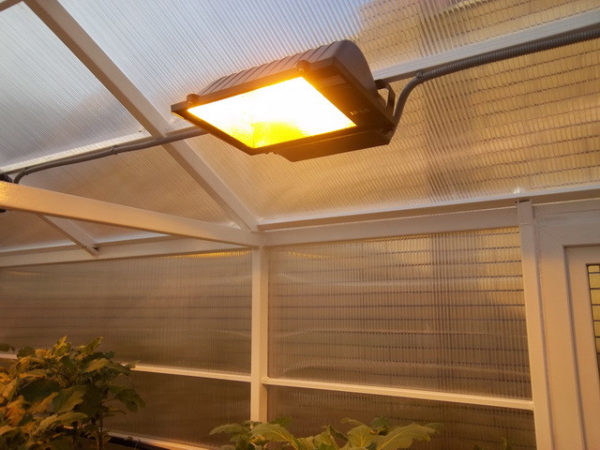
Varieties of greenhouse lamps
You can illuminate the greenhouse with several types of lamps:
- incandescent;
- luminescent;
- sodium;
- mercury;
- metal halide;
- LED;
- infrared.
Incandescent lamps
They well illuminate the premises of the greenhouse, and also slightly warm the air. Their disadvantage is that they consume a lot of elektrichestva and have low efficiency. Their incandescent spectrum is 600 nanometers. If the plants are overheated, they will get burned leaves. Burns occur due to excess infrared, orange and red lighting. Also, during overheating, unnatural extension of the stems occurs, and the foliage is deformed, becoming shallow and sluggish.
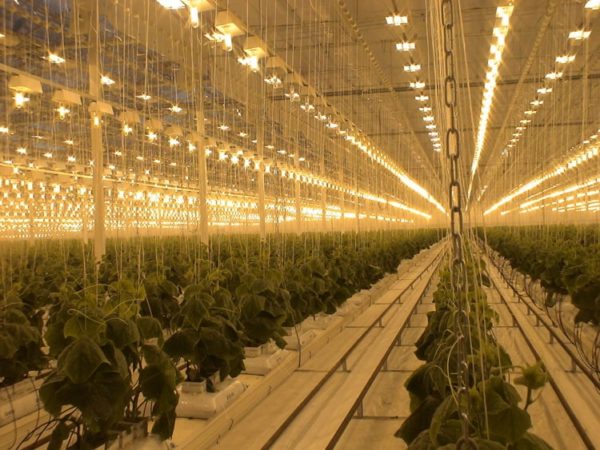
Fluorescent lamps
The color spectrum of fluorescent lights works well on greenhouse crops. They serve for a long time, and their cost is low. Such lamps work in the same way as energy-saving lighting devices, but can illuminate a large area. These are fluorescent lamps: they illuminate both seedlings and grown plants. For their installation, boxes of metal are used, as well as special lighting fixtures made of plastic.
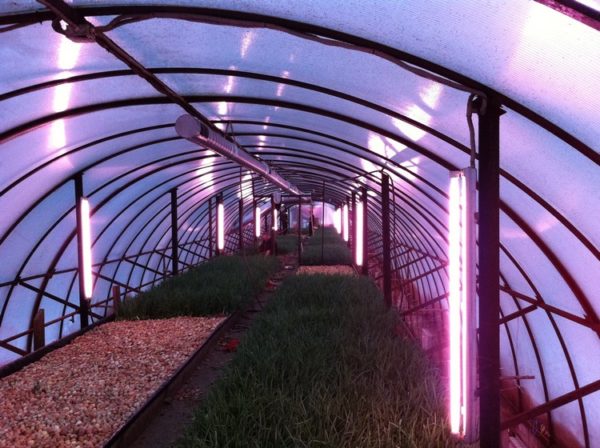
Sodium lamps
These are economical high pressure light bulbs. Previously, their color spectrum was only red-orange, close to sunlight. There were few blue rays in sodium lamps. In connection with this, a revision was made, as a result of which lamps with a blue spectrum of light rays appeared.
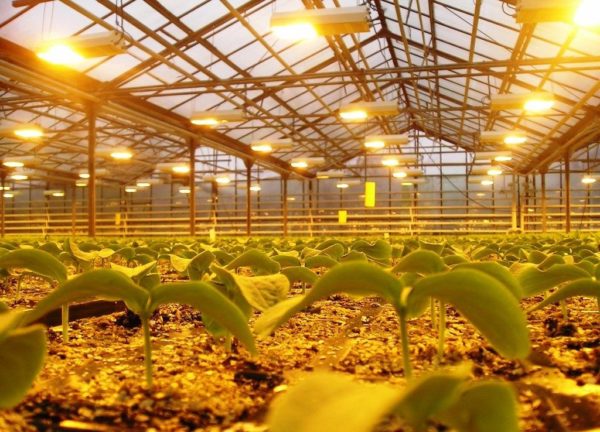
Mercury lamps
Mercury lamps provide near-ultraviolet light, useful for crops. These are compact and bright light sources. Ultraviolet helps to activate the processes of photosynthesis, but you can not abuse it. The use of mercury lamps is possible provided that they are combined with natural light. They are used when the fruits begin to ripen. To work with mercury, a stable voltage in the electrical network is necessary. In this case, permissible differences are not more than 5%.
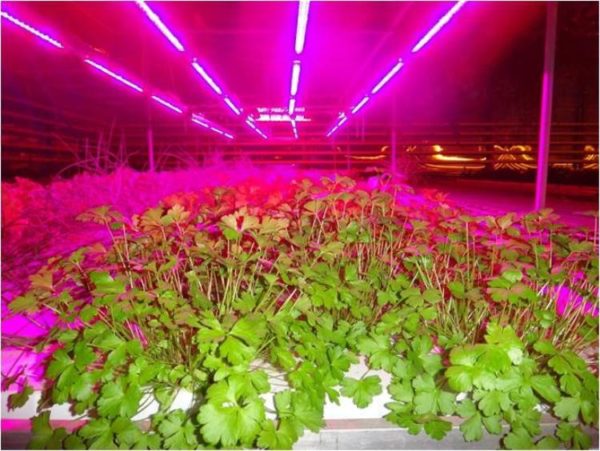
Metal halide lamps
The light spectrum of metal halide lamps is well suited for plants. These light sources are compact, but difficult to install. After the end of their service life they must be disposed of, and not thrown into the general garbage chute. Despite this specificity, metal halide lamps have a high level of light transmission. They are ideal as daylight sources if the voltage in the mains is not subject to strong surges. At the slightest change in voltage, the color spectrum of these lamps will change. When you turn off the light source, it should take a little time before restoring its work.
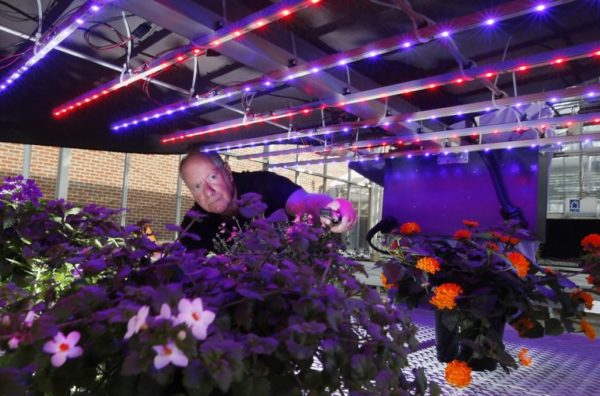
Not every gardener can afford to use metal halide lamps - because of their high price and sensitivity to voltage in the mains.
LEDs and their application
LED lamps are so diverse that you can choose any color spectrum, making up a combination of several lamps. Gardeners select different colors for each crop. LEDs work for a long time and consume a minimum of electricity. They are placed at different heights, adjusting the light intensity. For seedlings, bulbs that give blue colors are suitable. To ripen the fruit, the rays of the red and orange spectrum are used. It is necessary to take into account the sensitivity of the LEDs to voltage drops and monitor the condition of the wiring. If the wiring is OK, they will justify their cost in the first season of use.
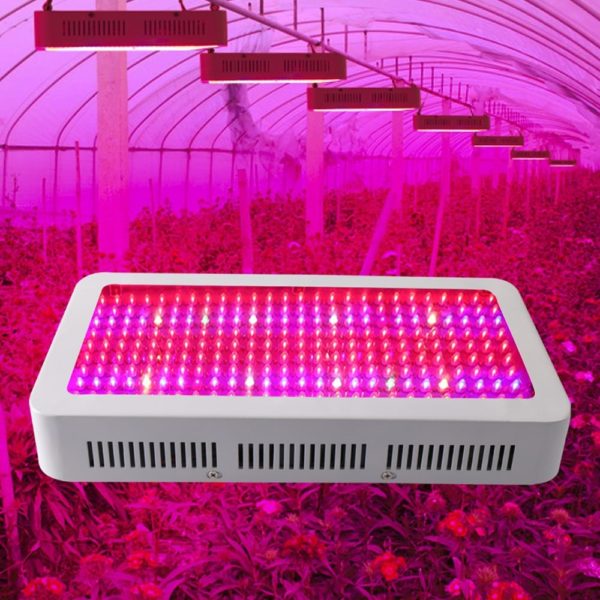
Ultraviolet lamps
They work the same way as fluorescent light sources. In the flask, radiation from the ultraviolet spectrum occurs. It appears due to the reaction that mercury and electromagnetic discharge enter. A gas discharge tube is made of uviloy or quartz glass, which transmits UV radiation. Safe is considered to be uviole glass, because less ozone is formed in it. The composition of the glass used for the manufacture of UV lamps is different. This allows you to create light sources that work in a specific color range.
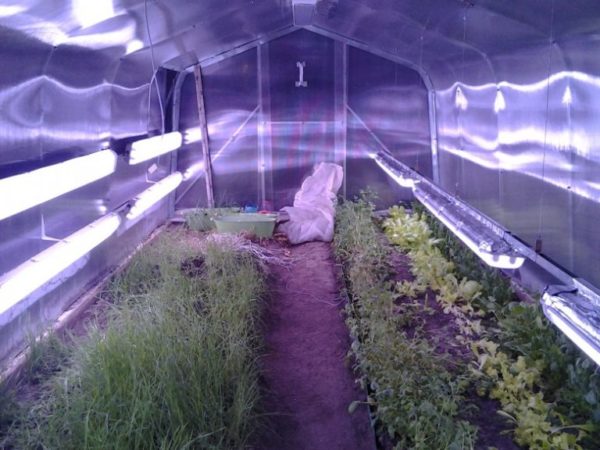
Infrared heaters
They are used to heat plants. Infrared light sources are classified as energy-saving systems. They create a favorable microclimate in the greenhouse. Thanks to him, cultures develop no worse than in the natural environment. The luminaires are equipped with a manual or automatic regulation function that allows you to control and change the temperature of the indoor air. Convection heaters can heat only air.
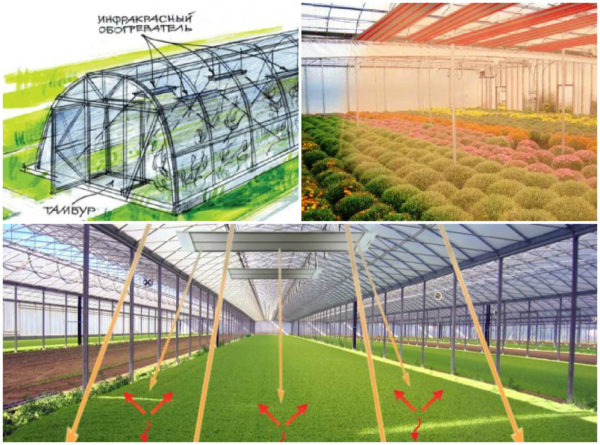
What illuminate different greenhouses
In summer cottages and private areas, polycarbonate greenhouses are often found. Greenhouse facilities for industrial use are made of glass. For different types of greenhouses, different light sources are used, depending on the crops growing in them.
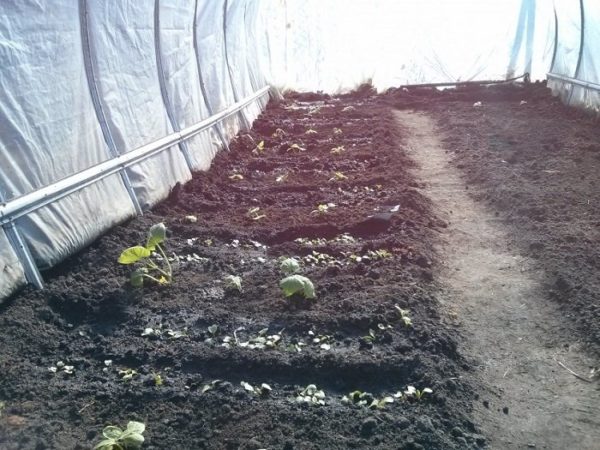 You may be interested in:
You may be interested in:Polycarbonate Lighting
Polycarbonate is built small greenhouses for growing home-grown vegetables, fruits, berries. Good light transmission of polycarbonate sheets allows you to not use additional light sources in the summer. In autumn, winter and early spring, you need to learn the right combination of natural and artificial lighting. If everything is calculated correctly, you can make a profit from each square meter of a greenhouse or greenhouse.
As sources of artificial light apply:
- fluorescent lamps;
- LEDs
- ultraviolet.
Industrial greenhouse complexes
In industrial greenhouses, incandescent lamps are not used. To illuminate industrial greenhouse complexes use:
- sodium lamps;
- metal halide lamps.
As already noted, the light spectrum of sodium lamps is similar to sunlight. Despite the risk of attracting harmful insects, sodium light sources are economical and can be used for a long time. Plant growers value sodium lamps for their red and blue spectra, which are necessary for all types of crops.
A wide range of radiation from metal halide lamps also allows their use on an industrial scale. The high price does not stop professional plant growers, because metal halide lamps are compact and have a wide light spectrum.
How different plants illuminate
Some gardeners consider cucumbers an unpretentious culture, but this is not entirely true. If there are signs of a lack of light, you need to take care of installing additional lamps. Cucumbers do not like the long break between day and night lighting. This can cause a slowdown in their growth and the appearance of small sluggish fruits. For automatic lighting of cucumbers at any time, you can use light relays.
Cucumbers should be continuously lit for 10-12 hours, after which they need a break of about 6 hours. At this time, they need complete darkness. To stimulate the growth of cucumbers, blue spectrum lamps are needed, and during flowering, light sources with a red emission spectrum will be needed.
Onions can grow well in natural light, but sometimes it needs extra lighting. Most often used phytolamps. Onion leaves become resilient, and the fruits become large and hard.
For strawberries grown in a greenhouse, 1 m long fluorescent lamps are suitable. Their power should be from 40 to 50 watts. Using one device, you can provide light 3-6 m2 of the greenhouse. For strawberries, 130 to 150 lux are enough, which it will regularly receive for 12-14 hours. In this case, only a warm spectrum is used.
Strawberries need constant daylight (from 14 to 18 hours a day). In vivo, it begins to bloom in May. When grown in a greenhouse, daylight hours are increased using neon, fluorescent, or mercury light sources. This stimulates the processes of photosynthesis: the leaves of strawberries will become a densely green color. When using artificial lighting, strawberries ripen much earlier than in the natural environment.
Tomato seedlings in the first days of growth are highlighted for 20 hours, gradually reducing the light intensity to 16-12 hours a day.
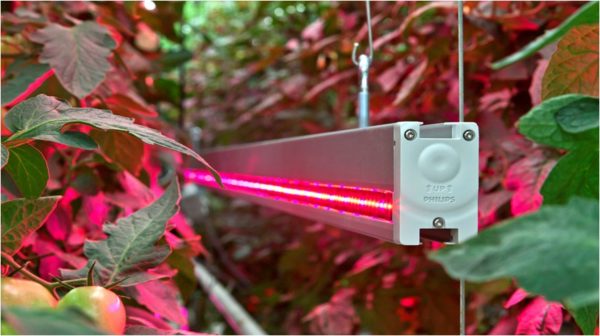
Calculation of the amount of lighting for greenhouses
To calculate the required number of lux per greenhouse, the formula F = ExS / Ki is used. Wherein:
- F is the stream of light;
- S is the area of the lit room;
- Ki - coefficient of application of light flux. For light sources having an integrated reflector, it is 0.8. For lamps with an external reflection source - 0.4.
For example, we have a greenhouse with an area of 14m2. 12,000 lux can be taken for the level of lighting. We make the following calculation:
14 000x12: 0.4. We get 420,000 lumens.
One plant is illuminated with a lamp with a power of 20 to 30 watts. The height of its placement should be 50-300 mm. For a group landing, you need 50 W lamps each. The distance from the light source to the upper leaves of the plant is from 400 to 600 mm. If the greenhouse is large, the power can be increased to 100 watts. Large winter greenhouses are more often illuminated with 250 W lamps, which are located at a height of 1 to 2 m.
Reviews
Valery (Arkhangelsk):
“He arranged lighting in a winter greenhouse with ordinary incandescent lamps. I regularly monitor the heat to avoid burns to plants. Everything would be fine, but they consume too much electricity. A friend advised switching to fluorescent lamps. I think that in the summer I’ll start rebuilding the lighting system again in order to save on electricity. ”
Arina (Moscow):
“Last summer, we built a large winter greenhouse. Immediately decided to install fluorescent lamps. They are economical and safe, but we could not part with the two old mercury lamps, which were also put into the room. Berries require constant light during the day, and even more so in winter and autumn. They need about 14 hours of continuous light. Our combined lighting was very useful for them. Strawberry leaves grow large, and the fruits are fleshy and aromatic. Our strawberries ripen in the greenhouse earlier than in the forest, and neighbors are constantly surprised at this.Mercury lamps must be handled with care - however, as with any glass appliances. ”
Artyom (Penza region):
“I have a small greenhouse in which I grow greens, cucumbers and tomatoes all year round. I put LED lamps in it and I do not regret it at all. Many criticize them, they say that they quickly burn out. All that had to be done was to completely change the wiring so that there were no short circuits or other troubles. Of course, it was not without financial investments, but after a year all this was doubly justified. I am pleased with the energy savings and the proper operation of LED lamps. They are compact and lightweight, they can be placed at any height. Each lamp is equipped with a regulator with which I can make the lighting more or less. For seedlings I use blue lamps, for adult plants - red and orange. The fruits ripen large and ripe. "
Proper lighting of the winter greenhouse is the key to the successful cultivation of vegetables, herbs and berries all year round. A preliminary calculation of the required number of lumens will help plan the installation of lighting equipment and correctly use it in the future.

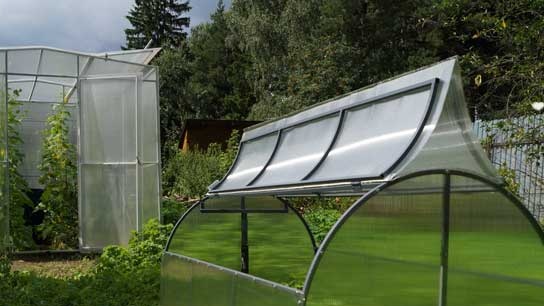 Why is a greenhouse open top?
Why is a greenhouse open top?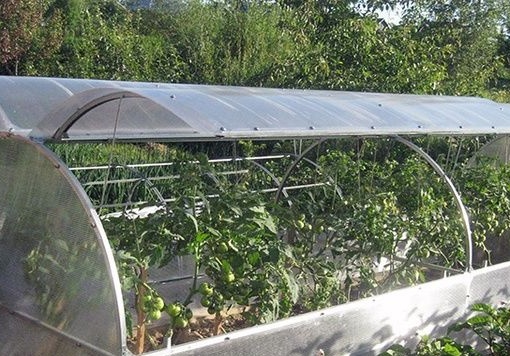 Greenhouse "Butterfly", is it worth it?
Greenhouse "Butterfly", is it worth it?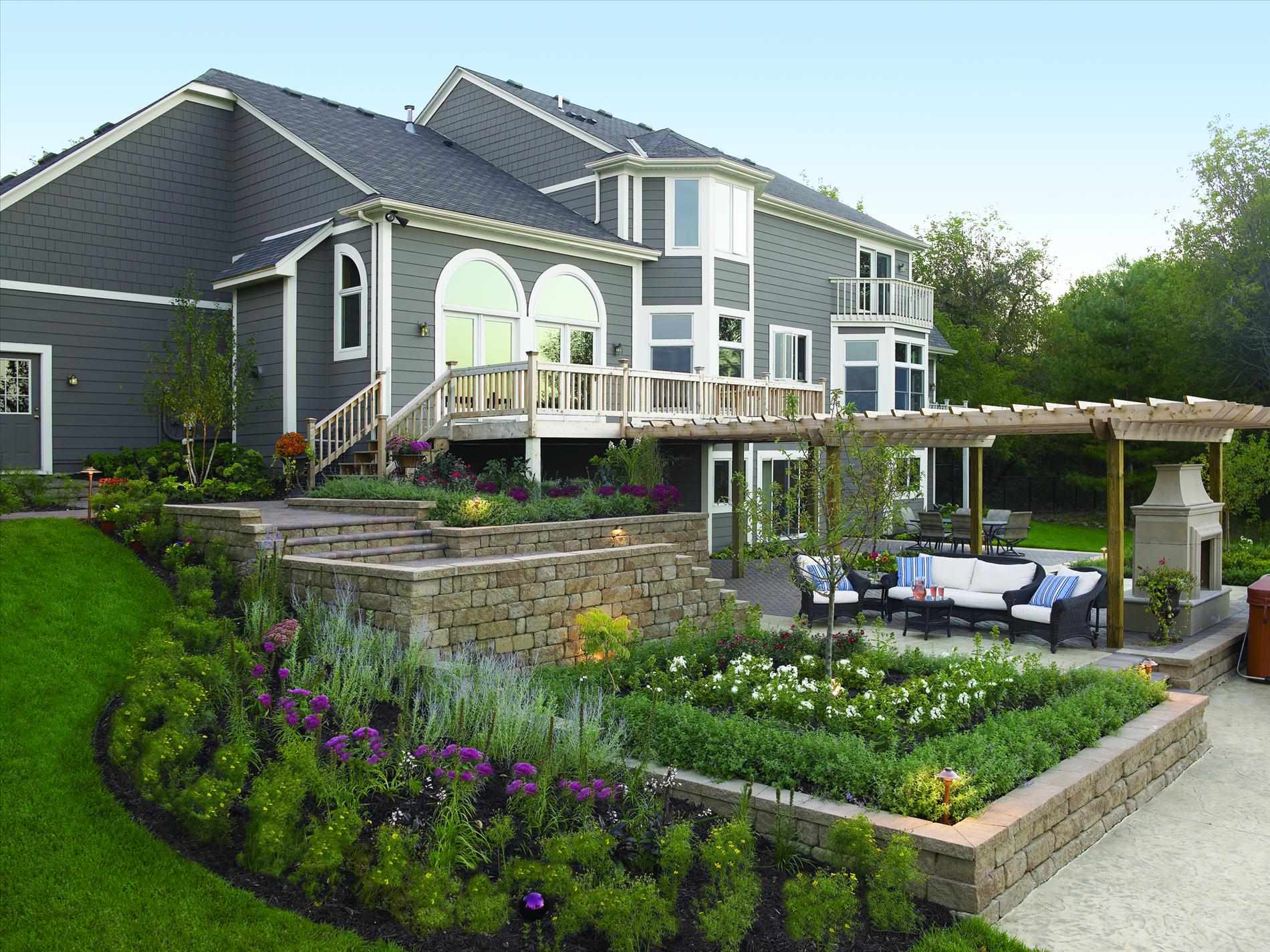 Do-it-yourself landscaping of an area of 8 acres: features of planning and zoning
Do-it-yourself landscaping of an area of 8 acres: features of planning and zoning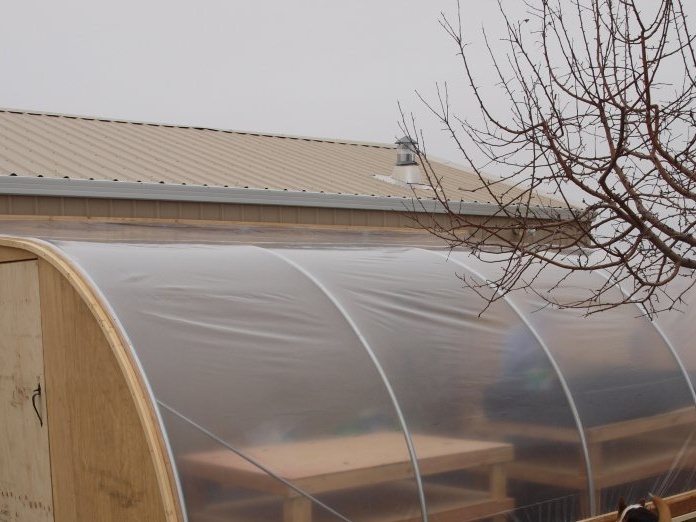 Shed greenhouse, pros and cons
Shed greenhouse, pros and cons